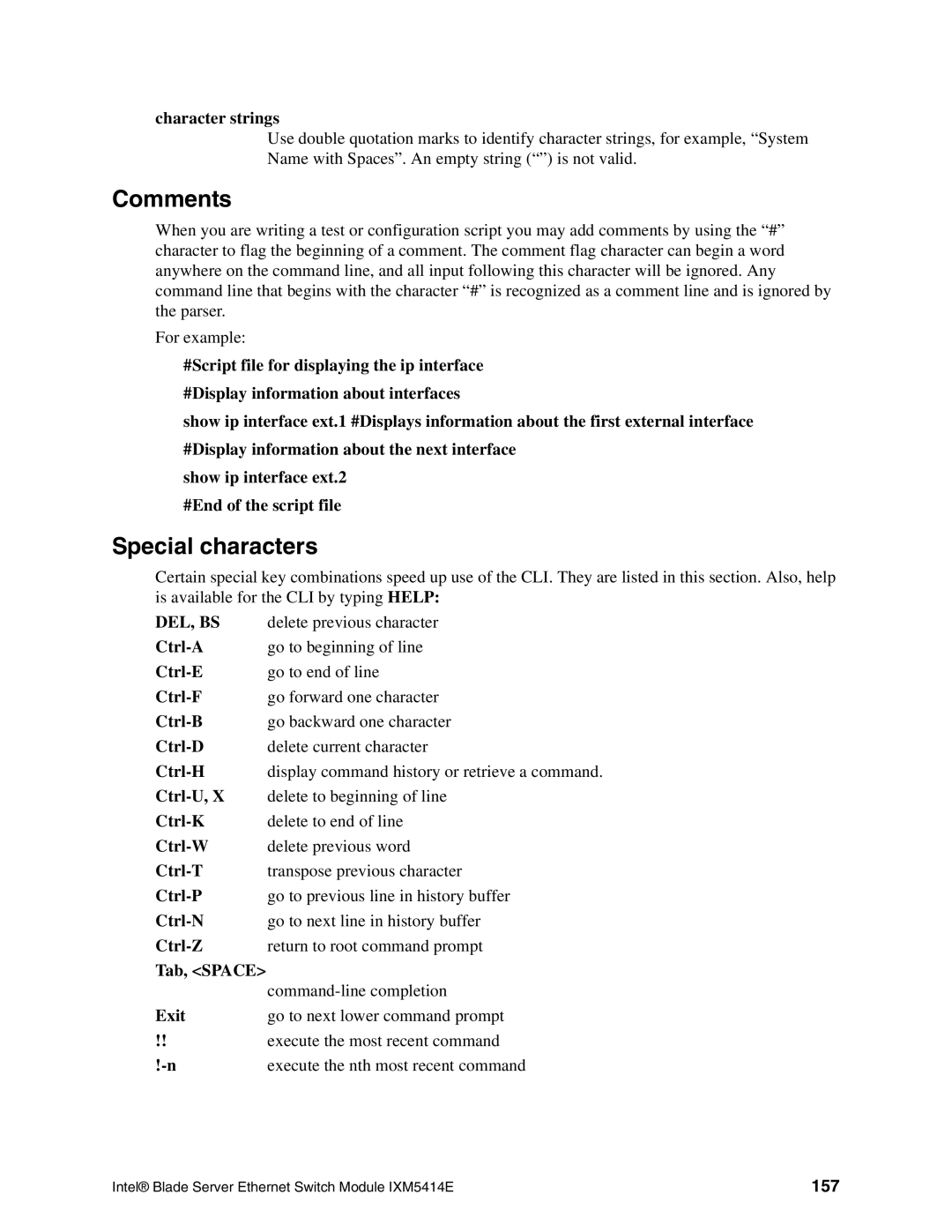character strings
Use double quotation marks to identify character strings, for example, “System
Name with Spaces”. An empty string (“”) is not valid.
Comments
When you are writing a test or configuration script you may add comments by using the “#” character to flag the beginning of a comment. The comment flag character can begin a word anywhere on the command line, and all input following this character will be ignored. Any command line that begins with the character “#” is recognized as a comment line and is ignored by the parser.
For example:
#Script file for displaying the ip interface #Display information about interfaces
show ip interface ext.1 #Displays information about the first external interface #Display information about the next interface
show ip interface ext.2 #End of the script file
Special characters
Certain special key combinations speed up use of the CLI. They are listed in this section. Also, help is available for the CLI by typing HELP:
DEL, BS | delete previous character |
go to beginning of line | |
go to end of line | |
go forward one character | |
go backward one character | |
delete current character | |
display command history or retrieve a command. | |
delete to beginning of line | |
delete to end of line | |
delete previous word | |
transpose previous character | |
go to previous line in history buffer | |
go to next line in history buffer | |
return to root command prompt | |
Tab, <SPACE> |
|
| |
Exit | go to next lower command prompt |
!! | execute the most recent command |
execute the nth most recent command |
Intel® Blade Server Ethernet Switch Module IXM5414E | 157 |
